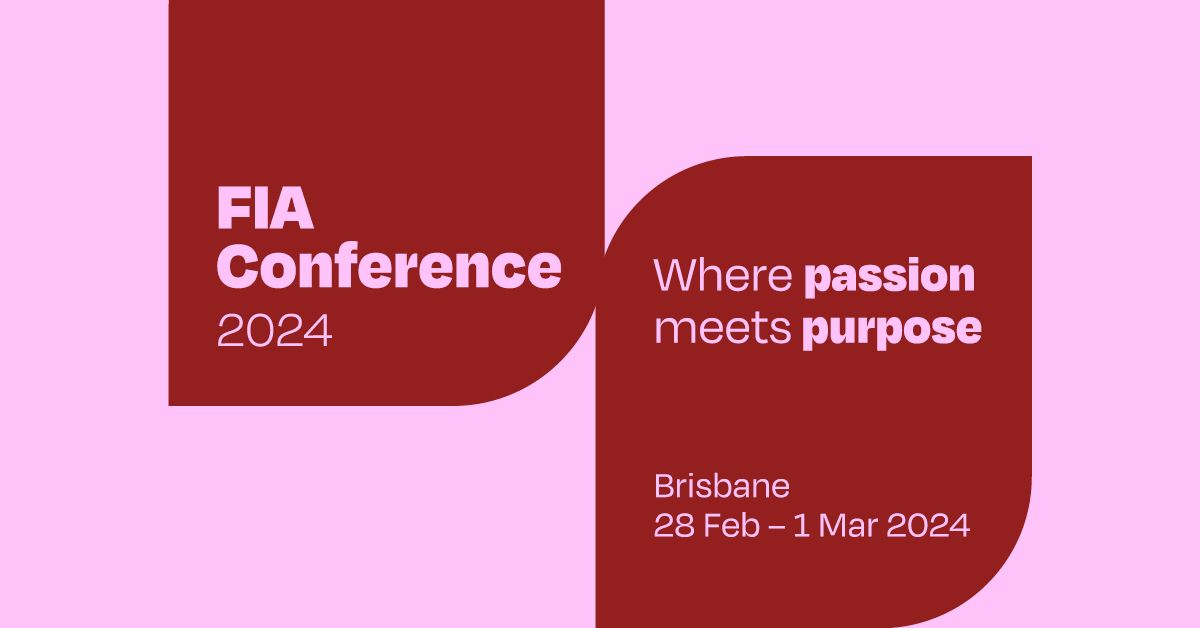Take care of your people, and they’ll take care of your business
Take care of your people, and they’ll take care of your business
Listen to this article instead
Size: 2.89 MB
Richard Branson once famously said, “Take care of your employees, and they’ll take care of your business”. Put simply, the key to engaging your customers is to engage your workforce.
An engaged employee is more than just a happy employee. Many employees are happy with a weekly paycheck, some level of flexibility and a pat on the back now and then. A truly engaged employee is one that has an emotional investment in the company, meaning they care deeply about their work and their organisation.
A 2018 Gallup report showed that only 14 per cent of Australian employees are actively engaged in their jobs. 71 per cent are not engaged and up to 15 per cent are actively disengaged.
When your people are disengaged, customer satisfaction drops, productivity decreases and teamwork and loyalty disappear. In addition, Gallup reported that an actively disengaged employee costs their company 34% of their salary. To put that into perspective, an employee on the average Australian wage of $84,000 costs their company more than $28,000 per year!
What is causing employee disengagement?
Employees become disengaged for various reasons. Some of the common threads include:
Poor leadership
The Harvard Business Review has reported that up to 30 per cent of employee disengagement is due to poor leadership. With only one-in-five leaders actively engaged in their own positions, it’s not surprising they are unable to engage their own team. Great employee engagement must start with great leadership engagement.
Communication style
Traditionally, corporate communication has been a ‘command and control’ approach, and modern organisations are now evolving to use a more dynamic and fluid style. Conversational communication, rather than directional, shows employees they are valued and supported.
Negative culture
Company culture is a system of shared assumptions, values, and beliefs. A negative culture can creep in for many reasons and become widespread if not managed. Rapid growth and particularly expansion across multiple sites, is a common pre-cursor for disengaged employees becoming disconnected and forming sub-cultures.
Not moving with the times
Work practices, attitudes, technologies, and ways of working are changing rapidly, and often organisations are not changing with them. Leaders should consider new concepts such as remote offices, flexibility and other tactics that will allow their employees to operate at their best.
What is the solution?
Improving employee engagement and workplace culture is often as simple as showing employees they are cared about and appreciated. Taking an employee-centric view of the workplace and letting workers steer their own ship to some degree will go a long way in improving morale.
Tactics that can be immediately implemented to increase engagement include:
- Holding one-on-one meetings with team members to discuss their ambitions and challenges. Weekly meetings are ideal.
Hosting weekly meetings or social events. This allows colleagues and peers to get to know each other on a personal level and breaks up the monotony of the everyday routine.
Talking up the team - for example, “we are the A-team”.
Having difficult conversations early, with respect and integrity. An excellent resource to help you do this is the
Situation – Behavior – Impact Feedback Tool.
This tool helps leaders deliver feedback more effectively.
Encouraging others to share in group meetings and rewarding honest and open dialogue so employees feel safe in their communication.
Accepting that mistakes and challenges are normal. Fix forward, don’t blame backwards.
Providing training for employees and ensuring they have the right tools for their job. This makes them feel empowered and able.
Sharing relevant information about the company so employees feel included and involved. Resentment can start to build if people feel they are being left in the dark.
Allowing flexibility. This may include different work hours to accommodate external commitments or working certain days at home. People tend to be more productive, happy and engaged when work fits in with their home lives.
Asking for feedback from your team regularly - every week if possible. This allows for faster correction if there is an issue, rather than letting resentment build.
Providing meaningful work. People are more productive and passionate about tasks that have meaning.
Removing ‘triangles. Triangles occur when two workers ‘gossip’ about another. This can occur at any level within an organisation, including a leader gossiping with other team members. It’s extremely damaging and must be shut down quickly.
Real life tools
There are some excellent tools available to assist people leaders and organisations in building and maintaining employee engagement and workplace culture:
Atlassian
- Atlassian’s Playbook is a guide to unleashing your team’s potential. Atlassian claims the playbook has transformed the way their company works and is helping others do the same.
The Team Canvas -
A business model for teamwork that can be tailored to any organisation. It shows how to bring team members on the same page, resolve conflicts and build productive culture.
Rachael Robertson -
Rachael is an Australian leadership expert who successfully led a team during a year-long expedition to Antarctica. Her website is extremely interesting and includes a ‘Toolbox’ of monthly leadership updates billed as ‘always informative, sometimes fun and most of the time extremely useful’.
There is no hidden secret to building and maintaining great employee engagement and culture. Companies that make the effort to engage their workforce will ultimately win with both their people and their customers. In the words of Richard Branson, “It’s that simple.”
Size: 2.89 MB
Richard Branson once famously said, “Take care of your employees, and they’ll take care of your business”. Put simply, the key to engaging your customers is to engage your workforce.
An engaged employee is more than just a happy employee. Many employees are happy with a weekly paycheck, some level of flexibility and a pat on the back now and then. A truly engaged employee is one that has an emotional investment in the company, meaning they care deeply about their work and their organisation.
A 2018 Gallup report showed that only 14 per cent of Australian employees are actively engaged in their jobs. 71 per cent are not engaged and up to 15 per cent are actively disengaged.
When your people are disengaged, customer satisfaction drops, productivity decreases and teamwork and loyalty disappear. In addition, Gallup reported that an actively disengaged employee costs their company 34% of their salary. To put that into perspective, an employee on the average Australian wage of $84,000 costs their company more than $28,000 per year!
What is causing employee disengagement?
Employees become disengaged for various reasons. Some of the common threads include:
Poor leadership
The Harvard Business Review has reported that up to 30 per cent of employee disengagement is due to poor leadership. With only one-in-five leaders actively engaged in their own positions, it’s not surprising they are unable to engage their own team. Great employee engagement must start with great leadership engagement.
Communication style
Traditionally, corporate communication has been a ‘command and control’ approach, and modern organisations are now evolving to use a more dynamic and fluid style. Conversational communication, rather than directional, shows employees they are valued and supported.
Negative culture
Company culture is a system of shared assumptions, values, and beliefs. A negative culture can creep in for many reasons and become widespread if not managed. Rapid growth and particularly expansion across multiple sites, is a common pre-cursor for disengaged employees becoming disconnected and forming sub-cultures.
Not moving with the times
Work practices, attitudes, technologies, and ways of working are changing rapidly, and often organisations are not changing with them. Leaders should consider new concepts such as remote offices, flexibility and other tactics that will allow their employees to operate at their best.
What is the solution?
Improving employee engagement and workplace culture is often as simple as showing employees they are cared about and appreciated. Taking an employee-centric view of the workplace and letting workers steer their own ship to some degree will go a long way in improving morale.
Tactics that can be immediately implemented to increase engagement include:
- Holding one-on-one meetings with team members to discuss their ambitions and challenges. Weekly meetings are ideal.
Hosting weekly meetings or social events. This allows colleagues and peers to get to know each other on a personal level and breaks up the monotony of the everyday routine.
Talking up the team - for example, “we are the A-team”.
Having difficult conversations early, with respect and integrity. An excellent resource to help you do this is the Situation – Behavior – Impact Feedback Tool. This tool helps leaders deliver feedback more effectively.
Encouraging others to share in group meetings and rewarding honest and open dialogue so employees feel safe in their communication.
Accepting that mistakes and challenges are normal. Fix forward, don’t blame backwards.
Providing training for employees and ensuring they have the right tools for their job. This makes them feel empowered and able.
Sharing relevant information about the company so employees feel included and involved. Resentment can start to build if people feel they are being left in the dark.
Allowing flexibility. This may include different work hours to accommodate external commitments or working certain days at home. People tend to be more productive, happy and engaged when work fits in with their home lives.
Asking for feedback from your team regularly - every week if possible. This allows for faster correction if there is an issue, rather than letting resentment build.
Providing meaningful work. People are more productive and passionate about tasks that have meaning.
Removing ‘triangles. Triangles occur when two workers ‘gossip’ about another. This can occur at any level within an organisation, including a leader gossiping with other team members. It’s extremely damaging and must be shut down quickly.
Real life tools
There are some excellent tools available to assist people leaders and organisations in building and maintaining employee engagement and workplace culture:
Atlassian - Atlassian’s Playbook is a guide to unleashing your team’s potential. Atlassian claims the playbook has transformed the way their company works and is helping others do the same.
The Team Canvas - A business model for teamwork that can be tailored to any organisation. It shows how to bring team members on the same page, resolve conflicts and build productive culture.
Rachael Robertson - Rachael is an Australian leadership expert who successfully led a team during a year-long expedition to Antarctica. Her website is extremely interesting and includes a ‘Toolbox’ of monthly leadership updates billed as ‘always informative, sometimes fun and most of the time extremely useful’.
There is no hidden secret to building and maintaining great employee engagement and culture. Companies that make the effort to engage their workforce will ultimately win with both their people and their customers. In the words of Richard Branson, “It’s that simple.”
Share This blog
Recent Articles










